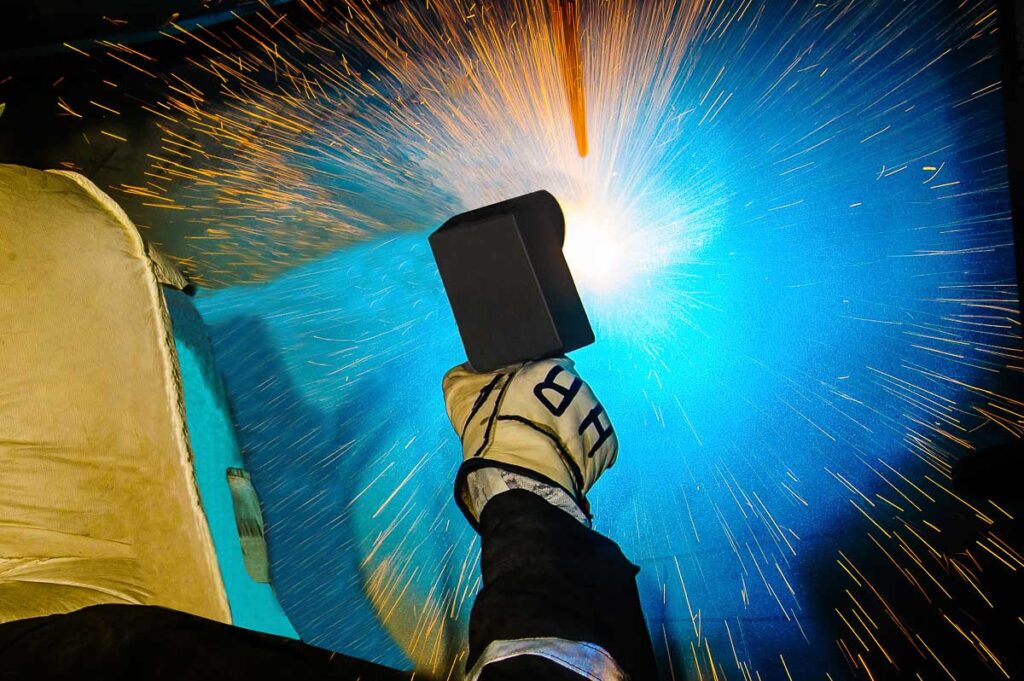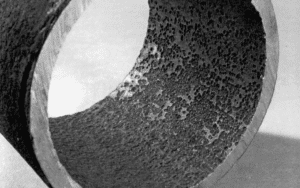What Causes Waste Heat Boiler Corrosion Within Smelting Furnaces and How Can it be Prevented?

Non-Ferrous pyrometallurgical plants across the globe rely on smelting furnaces to extract copper, nickel, lead, and zinc which are subsequently used in a wide variety of manufacturing processes. Renowned for their efficiency and speed, these assets need to be carefully maintained to operate at maximum capacity. Waste Heat Boilers (WHB) suffer from high-temperature sulfidation leading to waterwall degradation. This corrosive process has a detrimental impact on asset life and overall performance.
What causes corrosion and erosion?
The flue gas stream within a Smelting Furnace WHB has huge dust content, that may either slag on the surface depending on its melting point temperature or erode waterwalls. In general, metal oxides are present in the dust and are characterized as very erosive media. Under certain high-temperature, carbon-rich conditions, this environment can also trigger metal dusting – a severe form of degradation where metal surfaces disintegrate into fine particles due to carbon diffusion and carbide decomposition.

Flue gas originating from sulphur containing fuel becomes corrosive below a temperature of approximately 150°C (acid dew point corrosion). Local cold spots in metal air preheaters lead to rapid breakdown and corrosion of tubes and plates. These thermal gradients, in conjunction with carbon-bearing gases, also increase the risk of metal dusting, particularly where protective oxide layers are compromised. This type of corrosion is one of the key factors negatively affecting the energy efficiency of waste heat boilers.
Corrosion often leads to depletion
The incredibly high temperatures (which may reach around 1,350 degrees Celsius) circulating within the waste heat boiler start to affect the waterwalls. If this process is allowed to continue, areas of the boiler wall can become completely depleted due to sulfidation, erosion, and metal dusting, requiring costly shutdowns and urgent repair to operate efficiently.
Can it be prevented?
High Velocity Thermal Spray (HVTS): An IGS Solution
Integrated Global Solution’s (IGS) High Velocity Thermal Spray can be used to dramatically increase the lifespan of existing smelting equipment, acting as an erosion and metal dusting barrier in mission-critical apparatus.
Developed for safe on-site application IGS HVTS is a non-permeable thermal spray applied alloy cladding material, designed for corrosion, metal dusting and erosion resistance in high-temperature smelting and mineral refining environments.

IGS HVTS has been engineered specifically for the mining and mineral processing industry, ensuring better bond strength and excellent corrosion and wear resistance. IGS HVTS is designed for fast on-site application, ensuring fast return to service. It will withstand environments where other coatings are unable to offer lasting performance, including those prone to metal dusting in waste heat boilers.
HVTS solutions have a proven track record of successful application in high-temperature sulphuric and carbon-rich environments to mitigate corrosion, erosion, and metal dusting issues all over the world.
Copper Flash Smelting Furnaces in Asian Plant
The Copper Smelter in Asia operates two Copper Flash Smelting Furnaces, wherein the boilers are located directly above the furnace uptakes. The 8mm metal plate would often go into complete degradation, exposing the tubes to high-temperature corrosion including sulfidation and metal dusting.
The plant had ambitious plans for the future of its production development, and so needed a reliable solution for the recurring erosion and metal dusting in its boilers. After the IGS HVTS application, the plant identified zero metal wastage over the following two years and a production increase of 112%.
